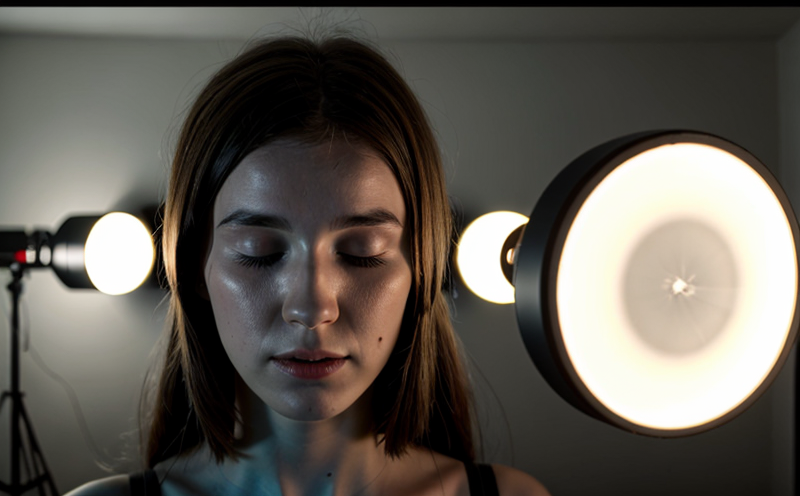IEEE P2400 Flicker and Temporal Light Modulation Testing of LED Systems
The IEEE P2400 standard provides a comprehensive framework for the testing and evaluation of flicker and temporal light modulation in lighting systems. This standard is particularly important for ensuring that modern LED lighting systems do not induce discomfort or adverse effects on human perception, especially in environments where prolonged exposure to artificial lighting occurs.
The IEEE P2400 standard addresses a critical aspect of LED design: flicker. Flicker can be defined as periodic variations in the intensity of light, which may be perceived by the human eye even when the frequency is too high for direct observation. While most people are unaware of the flicker phenomenon, certain individuals—such as those with photosensitive epilepsy or conditions like photophobia—can experience significant discomfort or adverse effects.
Understanding the temporal behavior of LED light sources is crucial because the perception of flicker can vary depending on factors such as ambient lighting levels and viewing distance. The IEEE P2400 standard helps to quantify these variables, providing a standardized approach for testing and characterizing LED systems under controlled conditions. This ensures that the performance of LED products meets industry standards and is suitable for various applications.
The testing methodology outlined in IEEE P2400 involves several key steps:
- Specimen preparation: Ensuring that the LED system to be tested is representative of the final product design.
- Instrumentation setup: Utilizing specialized equipment capable of measuring temporal light modulation, including photometers and oscilloscopes.
- Data acquisition: Collecting data on the temporal behavior of the LED system under various conditions, such as different ambient lighting levels and viewing angles.
- Analysis: Applying statistical methods to determine whether the flicker is within acceptable limits defined by the standard.
By adhering to this methodology, laboratories can ensure that their testing results are accurate and reliable. This not only helps manufacturers comply with regulatory requirements but also enhances product quality and consumer satisfaction.
| Test Parameter | Description |
|---|---|
| Flicker Frequency | The frequency at which the light intensity varies, typically measured in Hertz (Hz). |
| Ambient Light Level | The level of natural or existing artificial lighting that influences the perception of flicker. |
| Viewing Angle | The angle at which the LED system is observed, affecting how flicker is perceived by the human eye. |
In addition to flicker testing, IEEE P2400 also covers temporal light modulation, which refers to changes in light intensity over time. This includes phenomena such as pulsing and strobing, both of which can have significant impacts on visual comfort and perception.
| Stroboscopic Effects | Description |
|---|---|
| Pulsing | A form of temporal light modulation where the light intensity changes gradually over time, creating a sense of continuous brightness variation. |
| Strobing | An abrupt change in light intensity that can create a visual effect similar to a flashing light, which is particularly noticeable when viewed against dark backgrounds. |
The IEEE P2400 standard ensures that these effects are minimized or eliminated in LED lighting systems. By doing so, it enhances the overall quality and safety of LED products, making them more suitable for various applications where prolonged exposure is common.
For manufacturers and designers working with LED systems, compliance with IEEE P2400 is essential. It not only helps ensure product performance but also contributes to creating safer and more comfortable environments for end-users.
Industry Applications
- Hospitality: Ensuring that LED lighting in hotels, restaurants, and other public spaces does not cause discomfort or adverse effects on guests with photosensitive conditions.
- Education: Providing a stable light environment for students and staff to enhance learning experiences without introducing flicker-related issues.
- Healthcare: Guaranteeing that LED lighting in hospitals and clinics is flicker-free, contributing to better patient care and staff productivity.
- Home and Office Lighting: Offering a comfortable and visually pleasant environment by minimizing flicker and temporal light modulation effects.
The IEEE P2400 standard has broad applicability across various sectors due to its focus on human visual comfort. By adhering to this standard, manufacturers can ensure that their LED products meet the highest quality standards, thus enhancing customer satisfaction and safety in diverse environments.
Quality and Reliability Assurance
The IEEE P2400 standard plays a pivotal role in the quality assurance process for LED systems. By providing a standardized method for testing flicker and temporal light modulation, this standard ensures that products meet stringent performance criteria. This not only enhances consumer confidence but also improves brand reputation.
Quality control teams can use IEEE P2400 to identify and rectify issues early in the product development process. By incorporating these tests into their workflows, manufacturers can ensure that their LED systems are free from flicker and temporal light modulation effects that could lead to discomfort or adverse health impacts.
The standard also supports reliability assurance by providing a consistent framework for testing under various conditions. This helps in identifying any potential weaknesses in the design or manufacturing process that could compromise product performance over time.
Environmental and Sustainability Contributions
- Energy Efficiency: By minimizing flicker and temporal light modulation, LED systems can operate more efficiently, reducing energy consumption without compromising on visual quality or comfort.
- Reduced Waste: Ensuring that LED products meet IEEE P2400 standards helps extend their lifespan, thereby reducing the need for frequent replacements and associated waste generation.
- Improved Indoor Air Quality: Flicker-free lighting can contribute to a more stable indoor environment, which in turn supports overall well-being and reduces stress levels in occupants.
The IEEE P2400 standard not only enhances the environmental performance of LED systems but also promotes sustainable practices by encouraging the use of efficient and reliable products. This contributes to broader sustainability goals within the lighting industry.





